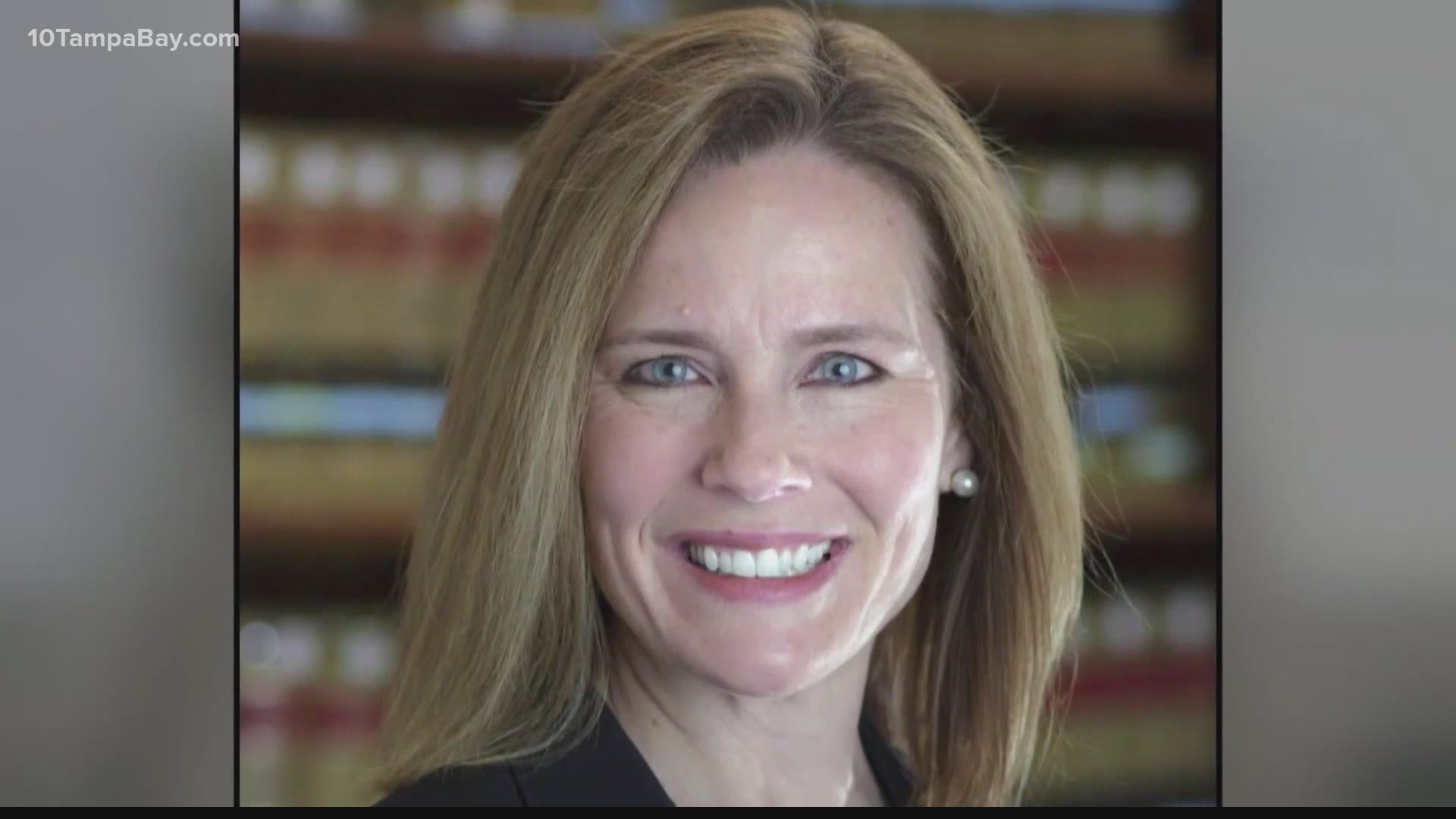BUFFALO, N.Y. — Now that President Donald Trump has announced Amy Coney Barrett as his nomination for the Supreme Court, 2 On Your Side wanted to know what is next in the legal process to confirm that nomination.
We took that question to 2 On Your Side legal analyst Paul Cambria.
"Well, first of all, when the president makes a nomination, that nomination goes to the judiciary committee of the Senate," he said. "The Senate then has a hearing, and we've seen those when they question potential candidates and so on.
"After that, the senate judiciary committee votes whether to recommend confirmation or not, and then it goes to the full Senate, and the full Senate merely needs to have a majority of the senators there voting a simple majority to confirm the president's choice."
The Senate would have less than 40 days before the election to confirm President Trump's nominee, a speedy schedule but not unprecedented.
President Trump's announcement capped a dramatic reshaping of the federal judiciary that will resonate for a generation and that he hopes will provide a needed boost to his re-election effort.
Republican senators are already lining up for a swift confirmation of Barrett ahead of the November 3 election, as they aim to lock in conservative gains in the federal judiciary before a potential transition of power. Trump, meanwhile, is hoping the nomination will serve to galvanize his supporters as he looks to fend off Democrat Joe Biden.
President Trump hailed Barrett as “a woman of remarkable intellect and character,” saying he had studied her record closely before making the pick.
“I looked and I studied, and you are very eminently qualified,” he said as Barrett stood next to him in the Rose Garden.
An ideological heir to the late conservative Justice Antonin Scalia, Barrett would fill the seat vacated after the Sept. 18 death of liberal icon Ruth Bader Ginsberg, in what would be the sharpest ideological swing since Clarence Thomas replaced Justice Thurgood Marshall nearly three decades ago.
She would be the sixth justice on the nine-member court to be appointed by a Republican president, and the third of President Trump’s first term in office.


